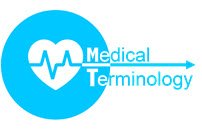
Medical terms used in doctor’s offices and healthcare facilities have survived thousands of years of human history. The term “diabetes” comes from ancient Greek and means “to pass through,” referring to one of the condition’s main symptoms.
Ancient civilizations’ healers created specialized language to describe the human body and its ailments. Greek and Latin roots are the foundations of modern medical communication. Ancient wisdom, cultural exchanges, and scientific advances have shaped the language doctors and healthcare professionals use today. The evolution of medical terminology shows us how these influences continue to impact healthcare communication.
The Birth of Medical Language in Ancient Greece
Medical terminology’s roots are in ancient Greece, where a remarkable medical language change occurred. Hippocrates of Kos’s original work (460-370 BC) made medicine a distinct profession, separating it from religious and philosophical practices.
Hippocrates’ foundational contributions
Hippocrates’ systematic approach to medicine created the foundation for the medical terminology we still use today. He introduced many essential medical terms, including symptoms, diagnosis, therapy, trauma, and sepsis. He pioneered categorizing illnesses as acute, chronic, endemic, and epidemic, introducing terms like exacerbation, relapse, and crisis.
Key Greek medical terms still used today
Modern medical English traces 75% of its roots back to Hippocrates and the Alexandrine school’s Greek. These ancient terms remain in use today:
- Diabetes: meaning “flowing through”
- Arthritis: inflammation of joints
- Nephritis: kidney inflammation
- Gastritis: stomach inflammation
- Pneumonia: lung condition
Early anatomical naming conventions
Ancient Greeks showed remarkable creativity in their anatomical naming approach. They named body parts after familiar objects and animals to help people remember them better. Greek scholars created naming patterns that later shaped Roman and medieval medical terminology. Their comparisons included musical instruments (like tuba for trumpet), armor (thorax for breastplate), and animals (musculus for mouse) to describe anatomical structures.
Greek anatomical terms worked so well that the Romans used them, too. They either imported terms directly or translated them into Latin. This practice created a dual-language foundation that shapes our medical vocabulary today.
The Roman Empire’s Linguistic Legacy
The Roman era witnessed a fascinating transformation in medical language. At the beginning of the first century AD, Latin emerged as a powerful force in medical terminology, while Greek remained the most important language of medicine in the Roman world.
Latin’s influence on medical vocabulary
Aulus Cornelius Celsus marked a turning point when he tackled Latin’s lack of medical terms. His systematic approach to adapting Greek medical terminology followed three main patterns:
- Direct importation of Greek terms (like pyloros, now pylorus)
- Latinization of Greek words (such as stomachus)
- Translation of Greek terms into Latin equivalents (dentes canini from Greek kynodontes)
Greek-Latin hybrid terms
Our modern medical vocabulary has many terms that combine both Greek and Latin elements. Research has identified approximately 250 Greco-Latin hybrids in medical terminology. These hybrid terms have become so essential to medical communication that attempts to eliminate them have proven impractical.
Notable Roman medical scholars
Several prominent Roman medical scholars shaped our medical vocabulary beyond Celsus. Galen of Pergamon (129-216 AD) emerged as an especially influential figure and served as physician to multiple Roman emperors. His contributions revolutionized Western medical science for over a millennium.
Research shows that about 95% of English medical terms stem from or are created based on Latin and latinized Greek. The Roman Empire’s linguistic legacy continues to shape modern medical communication. Medical professionals find it almost impossible to become skilled at terminology without understanding simple Latin.
Medieval and Renaissance Transformations
The Arab civilization’s golden age brought significant changes to medical terminology. Baghdad’s Dar al-Hikma (House of Wisdom), established in 832 AD, became a cornerstone for preserving and advancing medical knowledge.
Arabic influences on medical terminology
Scholars in the Arab world protected ancient medical wisdom by translating Greek texts into Arabic. These translators earned gold equal to their manuscript’s weight. Modern medical vocabulary still shows Arabic influence through words like “nucha” (meaning nape).
Revival of classical medical texts
European scholars like Gerard of Cremona (1114-1187) found that there was these Arabic translations in the 11th and 12th centuries and started converting them to Latin. Several prominent physicians shaped Europe’s medical education:
- Ibn Sina’s Canon of Medicine stayed required reading at medical schools until the mid-16th century
- Al-Zahrawi’s Tasrif became the leading medical text in European universities
Standardization efforts during the Renaissance
The Renaissance period (15th-16th centuries) brought the era of medical Latin. Scholars standardized terminology by systematically translating Greek and Arabic medical writings. Latin became the common language of anatomy, while keeping some Greek terms like “diaphragm” and “condyles”.
Johannes Gutenberg’s printing press helped medical knowledge spread faster throughout European communities. This breakthrough allowed quick sharing of theories and opinions, which revolutionized medical terminology across regions.
Modern Medical Terminology Evolution
Medical communication has changed dramatically in recent years. Healthcare professionals now need standardized medical terminology more than ever, both nationally and internationally.
Impact of scientific discoveries
Medical English dominates the field today, with about 95% of influential medical journals published in English. This change has brought new challenges to keep terminology consistent across healthcare settings. Modern medical terms now use more English language elements instead of the traditional Greek and Latin roots.
Development of standardized nomenclature
SNOMED (Systematized Nomenclature of Medicine) marked a major milestone when it was created in 1975. The system has grown into SNOMED CT, which now has over 360,000 unique medical concepts. Its use has led to remarkable results:
- Better data quality in clinical settings
- Better communication between healthcare providers
- Standardized reporting across medical institutions
Integration of technology-related terms
Electronic health records (EHRs) have changed how we document and share medical information completely. The Health Insurance Portability and Accountability Act (HIPAA) of 1996 set national code standards. The Unified Medical Language System (UMLS) came in the 1990s and helped solve two big problems:
- Different ways to express similar concepts
- Information spread across multiple databases
Health terminology systems are constantly expanding to meet the challenges of computerizing clinical data. Standardized medical terminology and structured reporting have made medical information much more useful in research, public health, and case studies.
Conclusion
Medical terminology shows humanity’s constant pursuit of healing knowledge. Greek wisdom created the foundation for modern medical language. Roman scholars later built upon this base by adapting Latin terms and creating hybrid expressions.
Classical roots have proven their staying power through centuries. Arabic scholars preserved and improved medical knowledge in medieval times, but classical terminology remained the core of medical communication. The Renaissance brought standardization that strengthened these ancient terms and made medical discourse more precise.
English dominates modern healthcare communication, which creates new challenges. Notwithstanding that, classical roots still shape our medical vocabulary. New standardization systems like SNOMED CT adapt to technological progress. This remarkable trip connects ancient wisdom with modern practice and creates a shared language that exceeds time and cultural boundaries.
Medical terminology adapts to new findings while respecting its historical roots. Standardized systems will evolve, but the core principles of medical communication remain unchanged. Healthcare professionals worldwide still rely on precise, clear, and universal understanding.
FAQs – Medical Terminology Through Time
Q1. Why is medical terminology important in healthcare? Medical terminology is crucial in healthcare as it provides a standardized language for clear and precise communication among healthcare professionals. It helps accurately describe symptoms, diagnoses, and treatments, reducing the risk of misunderstandings and errors in patient care.
Q2. How has the evolution of medical terminology influenced modern healthcare practices? The evolution of medical terminology has significantly impacted modern healthcare by creating a universal language for medical professionals worldwide. This standardization has improved communication, enhanced research capabilities, and facilitated the development of electronic health records and international medical collaborations.
Q3. What are the primary sources of modern medical terms? Modern medical terms primarily originate from ancient Greek and Latin roots, with approximately 75% of present-day medical English tracing back to these classical languages. Arabic influences and more recent English-based terms have also contributed to the current medical vocabulary.
Q4. How has technology impacted medical terminology in recent years? Technology has greatly influenced medical terminology by developing standardized nomenclature systems like SNOMED CT and integrating electronic health records. These advancements have improved data quality, enhanced communication between healthcare providers, and standardized reporting across medical institutions.
Q5. Are efforts being made to standardize medical terminology globally? Yes, significant efforts are being made to standardize medical terminology globally. Systems like SNOMED CT, which contains over 360,000 unique medical concepts, and the Unified Medical Language System (UMLS) have been developed to overcome language barriers and improve consistency in medical communication across different healthcare settings and countries.
If you want to boost your knowledge of medical terminology by learning Medical Terminology Online plus receiving a best-in-class textbook, click on the link below.
Online Basic Medical Terminology Course
Aulus Cornelius Celsus (c. 25 BC – c. 50 AD) was a Roman encyclopaedist, known for his extant medical work, De Medicina, which is believed to be the only surviving section of a much larger encyclopedia. The De Medicina is a primary source on diet, pharmacy, surgery and related fields, and it is one of the best sources concerning medical knowledge in the Roman world.
